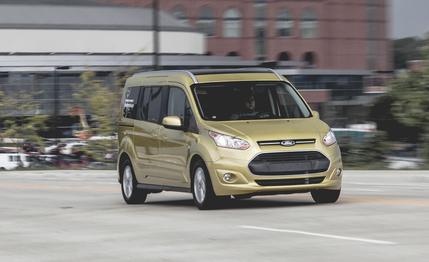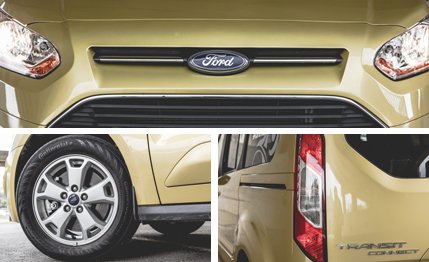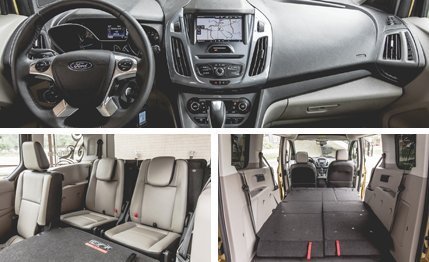 Instrumented Test
Instrumented Test
Failure inspires some to greatness and pushes others to surrender. Ford’s response to its previous failures in the minivan market has been a mix of the two. After watching sales dwindle for years, Ford surrendered the class in 2008. But then, a couple of years later, it plopped the Transit Connect into Americans’ laps. An unpolished niche urban commercial runabout with no real passenger-hauling ambitions, it nonetheless sold upward of 30,000 units annually. (While Chrysler sold almost eight times as many Town & Countries and Dodge Grand Caravans.) Now, though, we’re getting this redesigned Transit Connect that no longer suggests passengers were an afterthought.
Granted, you can still get a Transit Connect cargo van. But if you haul people more often than you do flats of mums or cases of plumbing flanges, the Wagon—Ford’s designation for the passenger model—adds more sound insulation and interior finishings nice enough that you’ll completely forget the TC is also available with sheetmetal instead of windows and can haul up to 1270 pounds of cement. Instead, the long-wheelbase, dual-sliding-door version like the one we tested can haul up to seven passengers. Fold the second- and third-row seats, and there’s so much space that even this six-foot-seven writer could stretch out in back. It was then, as I admired the huge sunroof and the white LED lighting, that the niceties of the Transit Connect’s interior trimmings really hit me. I don’t normally lie down under ceilings this pleasant. It’s the opposite of the Village People’s construction worker: A laborer all dolled up as a socialite. And it’s thoroughly convincing.

Gravel pinging off of the rear wheel wells is the only giveaway of the Transit Connect’s humble roots on the road. The driver stares at a dash that, while not identical to the one in the Focus—with which the TC shares its platform—is close enough to give pause if you park a Focus next to a Connect and get into either of them in a hurry. Dynamically, you won’t confuse the two. While the vanlet does enjoy nice, weighty steering and a firm brake pedal, it doesn’t have quite the sharpness of its 10Best-winning sibling. But neither does it do much to remind the driver of its six-foot height. We recorded a 0.78-g figure on the skidpad and 178-foot stop from 70 mph, both right on par with what the bigger, uh, full-size minivans manage. Either way, it’s weird to exit a vehicle in which you sit so upright and look through so much glass and step out and up. As one staffer said, blinking, stepping into the sunlight, “Wait—this bar was in the basement the whole time?”

Straight-line performance with the 2.5-liter four leaves more to be desired. Zero to 60 mph in 10 seconds flat might be okay when you’re trying not to topple a five-foot-tall cake in your cargo van, but when the kids are screaming and you just need to get home, it’s an eternity. The average 60-mph run in our last minivan roundup was 7.6 seconds. A 1.6-liter EcoBoost four is available in cargo and short-wheelbase versions, but its extra 9 hp and 13 lb-ft wouldn’t make much of a difference. Still, for most family-shuffling duties, the 2.5’s 169 hp are probably adequate. And our observed 21 mpg is better than you’re likely to get out of a 4500-pound Toyota Sienna.
After bailing on the minivan market, Ford is loathe to admit that it’s back, calling the Transit Connect the “unminivan.” But as a great blend of carlike behavior, manageable footprint, and cavernous interior, it sure sounds like a minivan to us. No matter what they choose to call it, here’s hoping Ford enjoys greater success with it this time around.